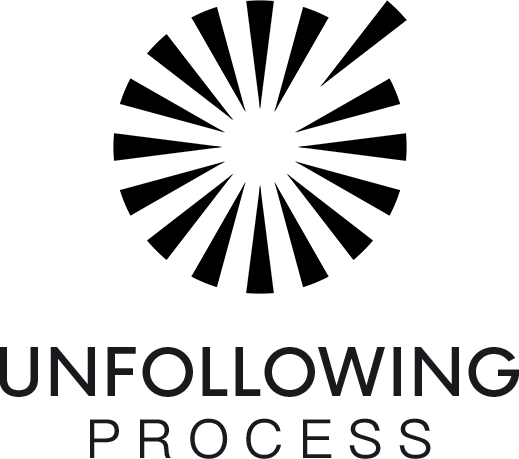
Liquid Cooling: A Parts Play Skill with Roots in Parts Therapy
Discover Liquid Cooling, a Parts Play skill for slowing down time in high-pressure moments. Built for everyday life, it shares roots with Parts Therapy and IFS Therapy while staying non-therapeutic.
"Wait, I thought you said your plane left at 3 p.m.?"
It happened fast.
The question landed, and Miriam sort of nodded yes and no at the same time, her mouth caught mid-pause.
"Well, I mean—I can't make the 8 a.m. because…" she started.
Her ears were already burning. Her voice kept going without her.
"…because the sitter can't take the kids until…"
She could feel it as she spoke. Her made-up constraints weren’t adding up. The timing was off. Her reasoning messy.
Her boss's brow was tightening.
Miriam heard herself babbling, trying to pad the edges of something somewhat true with just enough detail to make it sound reasonable. It wasn’t a lie exactly. Not intentional. But it wasn’t the truth either.
It was something worse.
It was bullshit.
Bullshit isn’t exactly lying. A liar knows the truth and chooses to hide it.
A bullshitter doesn’t care whether it’s true. They’re just performing believability, saying what sounds right.
Miriam wasn’t trying to deceive. She was mindlessly trying to protect a version of herself. Capable, unflappable, indispensable. At the precise moment that version was starting to crack.
And that’s when something shifted. Mid-sentence. Mid-bullshit.
She felt herself from the outside. Saw the machinery spinning in slow motion. Saw the part of her that had jumped in to save face, scrambling to make the story work.
And now, she had a choice.
That moment? It’s what we call Liquid Cooling.
It’s the practiced skill of slowing down time. Not outside, but inside.
Catching the moment a part takes over, and reaching back toward the Witness seat.
The more you do it, the faster you get there. Like a shortcut back to yourself. And from that seat, something opens.
You start building new pathways. The parts that were always first to respond—The Pleaser, The Bullshitter, The Prover— They start getting used to yielding to others. And the parts that hold your clarity, courage, and truth?
They get used to stepping forward, first.
The name comes from things like computers and high-performance machines that generate heat when they’re running hard. They need a system to cool the core so everything keeps moving smoothly.
In pro sports, athletes describe something similar. When the pressure’s high, time seems to slow. That’s because they’ve practiced specific moments again and again.
That’s what Liquid Cooling does for your internal system.
When stakes feel high and your crew of inner voices starts scrambling, it keeps your mind from overheating so you can actually steer. This idea is central in Parts Play, and while it shares roots with IFS Therapy and Parts Work, here it’s built for use in the middle of everyday moments — not a therapy session.
What changed things for Miriam was something her Parts Work coach called Parts Play. A practice of noticing, naming, and working with the different voices inside you.
There’s The Comparer. The Streamliner. The Imposter. The Passionate. The Inflator.
The Bullshitter, in her case, was a mashup of Actor and Protector.
A fast-talking composite that showed up anytime she felt unprepared but couldn’t afford to look it. It had gotten her through a rough childhood. First dates. Job interviews. Even an IRS audit. It had charm. Wit. A confident lean-back posture that said, I’ve got this.
But it also had darkness.
Because when that part was in charge, her normally present lighter parts went quiet.
Everyone could see it, including her. And over time, her self-respect went too.
Back in the meeting room, Miriam felt the shift while her words stumbled and fell off.
But just then, she took a breath. Felt her feet.
She slowed just a moment and felt herself come back.
“Hang on,” she said finally. “I’m sorry. I do have time to meet before my flight. I think I was just trying to protect some space so I wasn’t so crunched.”
Her boss nodded. “Thanks for saying that. That helps.”
Afterwards, her colleague messaged her:
That was baller. Never seen someone pivot like that, be real, and still keep face.
Miriam sat at the table a moment longer, feeling her body settle.
She’d lost herself for a moment but brought herself back.
And she felt proud she did.
Liquid Cooling helps you catch the moment before your parts take over.
It’s a micro-skill of metacognition. The ability to observe your mind in motion.
To notice when a part leaps up to perform, protect, or prove, and pause long enough to ask, Is this the part I want speaking right now?
Not to silence it. But to make room for a part that might serve you better. In IFS Therapy and Parts Therapy, similar pauses can happen in guided sessions. In Parts Play, you learn to do it live — at work, in love, with your kids — so you can stay in the captain’s seat.
And here’s the thing. It’s not just a stress tool.
You can use Liquid Cooling in the middle of a heated meeting. But also in the middle of a kiss. When you’re angry. When you’re touched. When your kid says something that surprises you and a dozen reactions surge at once. This isn’t just how you handle disruption.
It’s how you stay in the captain’s seat.
Elena discovered this during a board meeting when an investor questioned her burn rate projections.
She felt her Defender surge up immediately, ready to justify every expense, explain every decision. But she’d been practicing Liquid Cooling for months. The second it wanted to show up, she caught it. My Defender wants the floor. What’s it trying to protect?
Then she got curious. What other part of me might be useful right now? Her Synthesizer showed up. Clear. Grounded. Interested in solving the actual problem, not winning the argument.
“You know what,” she said, “let me walk you through the assumptions behind these numbers. Some of them might need updating.”
Instead of a defense, it became a collaboration.
“That investor became one of our biggest advocates,” Elena told me later. “Not because I had all the answers. But because I was willing to be vulnerable.”
The practice starts with small moments.
Notice when one of your parts takes over when nothing’s really at stake.
Your Anxious spinning worst-case scenarios over a delayed text. Your Overthinker getting lost in endless research to avoid making a decision. Your Teen saying yes to something your body clearly wants to decline.
Even something as simple as ordering coffee.
Marcus noticed his Impatient part would cut off the barista mid-sentence.
“Large dark roast, no room.” Quick. Transactional.
One morning, he caught it.
Felt his Impatient revving up as he approached the counter. And instead, he let a different part respond. His Connector.
“Hello, good morning. How’s your day going?” he asked.
Then he waited for the barista, which ended with, “Hey, thanks for asking” and a smile.
They had a brief, warm exchange about the weather.
“It sounds small,” Marcus told me later.
“But I realized how many moments like that I’d been rushing through. They add up. I was always in efficiency mode and never actually present for the people around me. I felt like I was sleepwalking.”

Practice staying in what we call the Witness seat.
Watch the part show up. Get curious about what it’s trying to do. Then consciously choose who responds. Give yourself just a moment to self-distance.
Marcus started doing this with his morning Slack messages too. He’d type a response, then pause before sending. Ask himself, Which part of me just wrote this?
Sometimes it was his True Nature. Clear, helpful, efficient.
Sometimes it was his Harmonizer. Avoiding necessary friction.
Sometimes it was his Superior. Trying to sound smarter than the situation required.
“I started rewriting probably a third of my messages,” he said. “I could see it wasn’t me writing them.” The shift was subtle but profound. His communication got cleaner. More honest. Less performed.
“People started saying I seemed more confident,” he said.
“But I wasn’t more confident. I was just… more there.
Here’s what Liquid Cooling doesn’t do.
It doesn’t make your parts disappear. Your Insecure will still be insecure. Your Pushy part will still push. Your Self-Critic will still find problems.
But you start to have a different relationship with them.
Instead of being insecure, you notice, Oh, my Insecure part is here. What’s it feeling off about? Instead of being defensive, you catch, My Defender just activated. What does it think needs protection? Instead of being scattered, you see, My Overthinker part is running the show. What does it need to slow down?
That shift from identification to observation changes everything.
You become the CEO of your inner board. Not just the latest part to bang the table.
A year later, Miriam got promoted to VP of Product.
During her first all-hands presentation, someone asked a question she didn’t know the answer to. She felt her Bullshitter stir. Felt the familiar urge to craft something convincing, something that sounded like expertise. But this time, she caught it before it grabbed the wheel.
“That’s a great question,” she said. “I’ve never thought of that. Can you elaborate some more?”
After the meeting, her CEO pulled her aside. “Love the leadership.”
Miriam nodded.
She knew what she meant.



Leave a comment
This site is protected by hCaptcha and the hCaptcha Privacy Policy and Terms of Service apply.